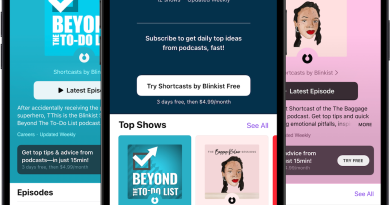From Concept to Launch: Your Ultimate Guide to Building a Business Website

Building a business website can feel like standing at the foot of a towering mountain. The path ahead seems daunting, and you might wonder where to start. Yet, establishing your online presence doesn’t have to be overwhelming. Your website is more than just a digital storefront; it’s often the first impression potential customers will have of your brand.
In today’s fast-paced digital world, having an effective business website is essential for success. Whether you’re launching a new venture or revamping an existing one, understanding how to navigate this process is crucial. So grab your gear as we embark on this journey from concept to launch! You’ll discover everything you need to know about creating an impactful online space that reflects your vision and connects with your audience. Let’s dive in!
Understanding the Importance of a Business Website
A business website serves as your digital home base. It’s where people discover who you are, what you offer, and why they should care. In a world dominated by online interactions, having an appealing website is non-negotiable.
Think of it as your 24/7 marketing tool. Unlike traditional advertising, a well-designed website can work tirelessly to attract customers anytime, anywhere.
Moreover, credibility matters. A professional-looking site builds trust with potential clients. If visitors find a sleek design and useful information, they’re more likely to engage with your brand.
Your website also allows for seamless communication through contact forms or live chat options. This fosters relationships and encourages feedback from users.
Don’t forget about search engines! An optimized site helps improve visibility on platforms like Google—making it easier for new customers to find you in the crowded marketplace.
Defining Your Goals and Target Audience
Defining your goals is the first step toward a successful business website. What do you want to achieve? Increased sales, brand awareness, or customer engagement? Clear objectives will guide every decision you make.
Next, consider who you’re trying to reach. Identifying your target audience is crucial. Understand their preferences, pain points, and behaviors. This knowledge shapes both content and design.
Create buyer personas that represent different segments of your audience. These fictional characters can help humanize data and provide insights into what resonates with potential customers.
Think about where they spend their time online too. Are they on social media platforms or searching through Google? Knowing this helps tailor your marketing efforts effectively.
By aligning your goals with an understanding of your audience, you’re setting the foundation for a website that truly serves its purpose while appealing directly to those who matter most—your future customers.
Choosing the Right Platform for Your Website

When it comes to building your business website, choosing the right platform is crucial. You want something that not only aligns with your vision but also supports your growth.
Think about what features you need. Do you require e-commerce capabilities? A blog section? Or perhaps a portfolio showcase? Different platforms cater to different needs.
User-friendliness matters too. If you’re not tech-savvy, go for options that offer intuitive design interfaces and easy navigation. This will save you time and frustration down the line.
Consider scalability as well. As your business expands, you’ll want a platform that can grow with you without requiring an overhaul.
Don’t overlook customer support. Reliable assistance can be a lifesaver when technical issues arise or if you have questions during setup. Choose wisely; this decision lays the foundation for your online presence.
Designing Your Website: Tips and Best Practices
Designing your website is where creativity meets functionality. Start with a clean layout that guides visitors effortlessly through your pages. White space helps prevent clutter, making content easier to digest.
Choose a color scheme that reflects your brand identity. Consistency across all pages builds trust and recognition. Limit font styles to two or three for a cohesive look while ensuring readability on all devices.
Images are powerful tools; use high-quality visuals that resonate with your audience. Avoid stock photos if you can—they often lack authenticity.
Don’t forget about navigation. A simple menu structure enhances user experience and keeps visitors engaged longer.
Prioritize mobile responsiveness since many users browse on smartphones today. Test how your site looks and operates across various screen sizes before launch.
Integrate clear calls-to-action throughout the site to guide users toward what matters most—whether it’s signing up for newsletters or making purchases.
Our Recommendation: Shopify

When it comes to building an effective business website, selecting the right platform is crucial. Among various options available, Shopify stands out as a premier choice for entrepreneurs and businesses of all sizes.
Shopify offers user-friendly features that make setting up and managing your online store straightforward. You don’t need extensive technical skills or coding knowledge to get started. With its drag-and-drop interface, you can create a professional-looking site in no time.
One of the greatest advantages of Shopify is its comprehensive e-commerce capabilities. From product management to payment processing, everything is integrated into one seamless experience. This allows you to focus more on growing your business rather than worrying about technical details.
Security is another critical aspect where Shopify excels. It provides SSL certification and PCI compliance out-of-the-box, ensuring that customer data remains safe during transactions. This not only builds trust but also enhances your credibility in the eyes of potential buyers.
Additionally, Shopify offers numerous customizable themes tailored for various industries. Whether you’re selling clothing or digital downloads, there’s likely a design that fits your brand perfectly without needing heavy modifications.
The platform also supports scalability as your business grows—whether adding new products or expanding sales channels like social media marketplaces; you won’t feel limited by functionality as demand increases.
If you’re considering launching an online presence for your business, utilizing Shopify could be a game-changer from day one. It’s designed with growth in mind while making sure users have all the tools they need at their disposal right from launch day onward.



